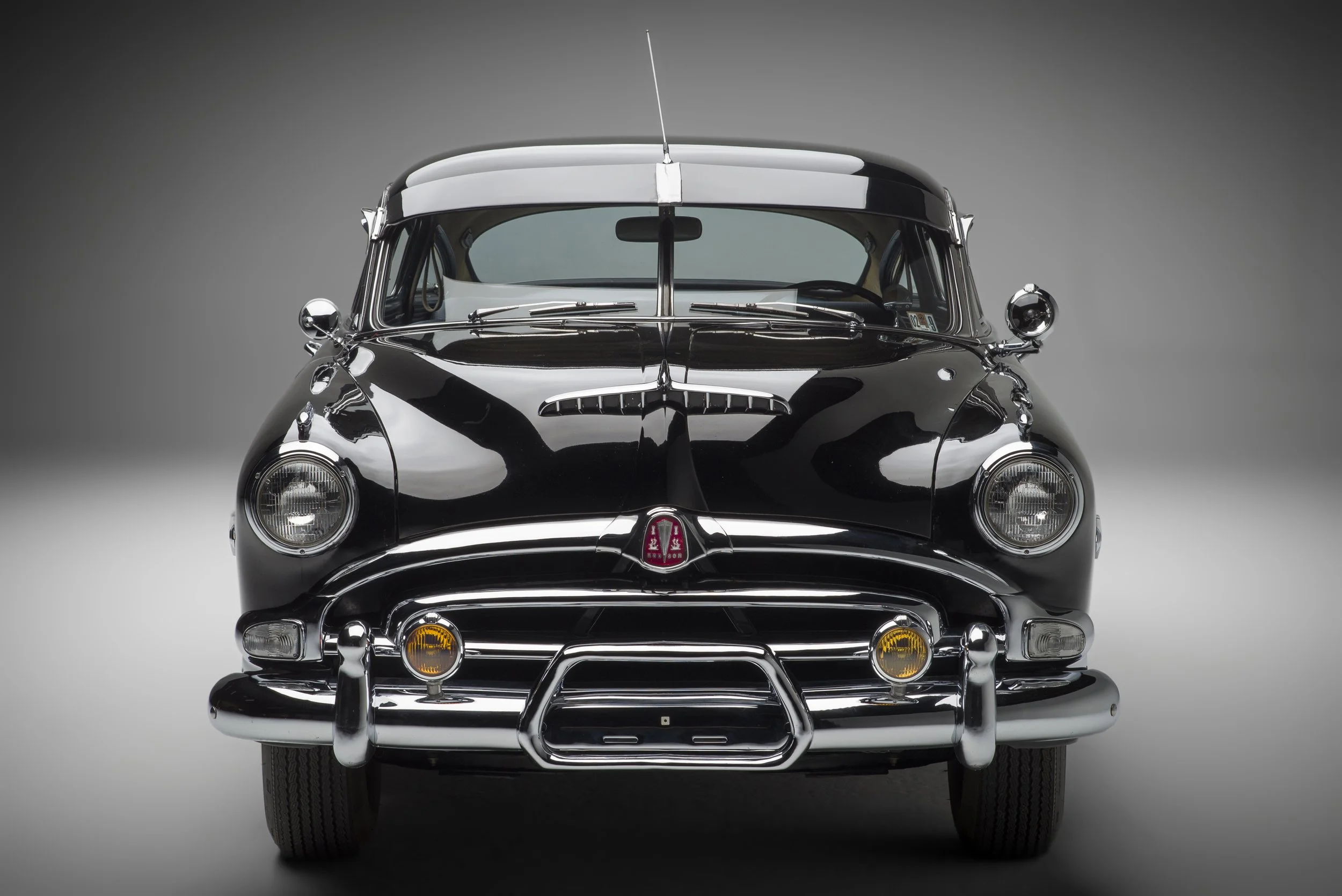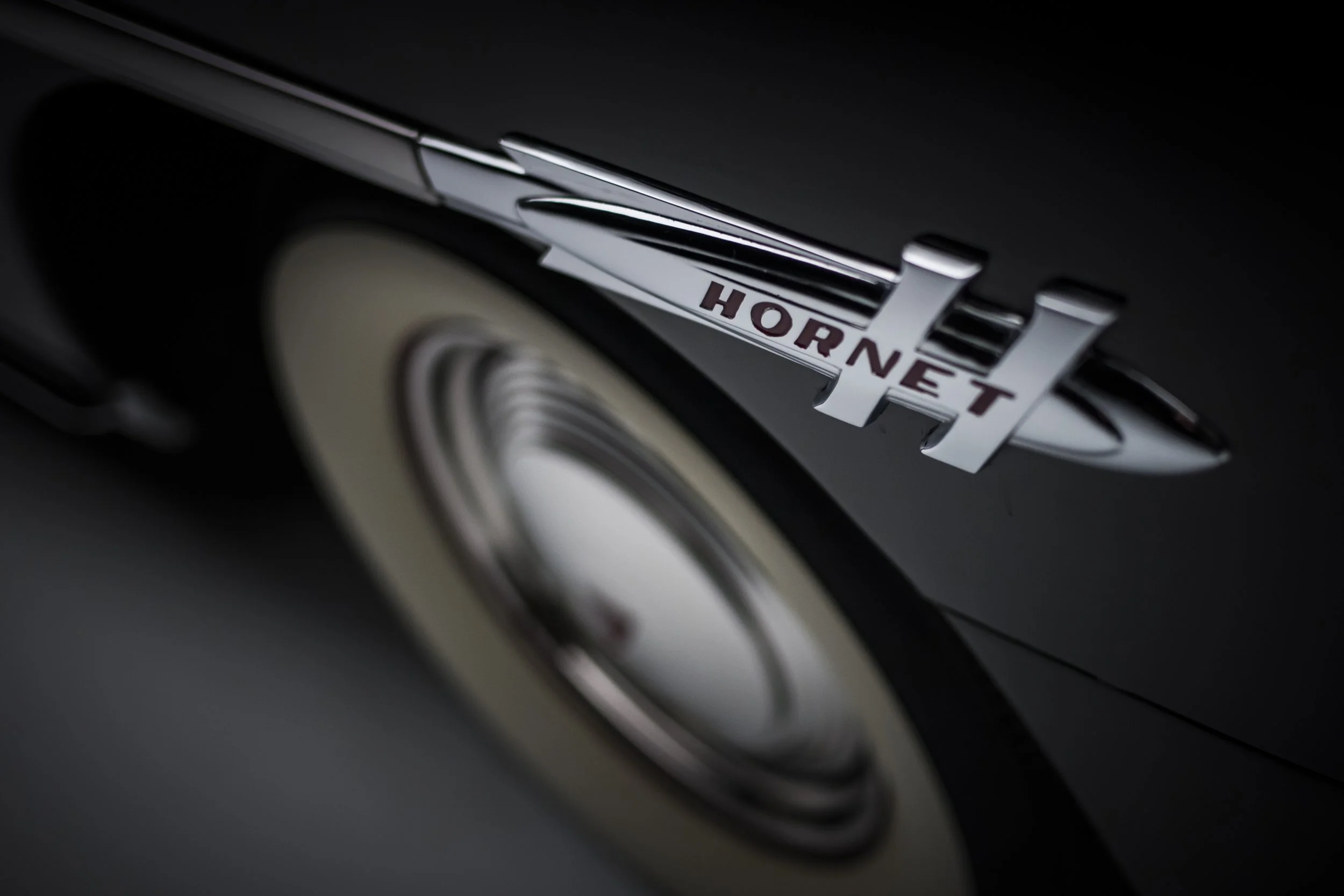1953 Hudson Hornet








1953 Hudson Hornet
The mantra of “race on Sunday, sell on Monday” didn’t originate in the pony car era of the 1960s. Attentive American automakers have always known the value of performance in the marketplace, and in the post-war era, no manufacturer was so attuned to the needs of both the track and the boulevard as Hudson.
- YEAR & MAKE - 1953 Hudson
- MODEL NAME - Hornet Six
- SERIES - 7C
- BODY TYPE - 4 Door, 6 Passenger Sedan
- BODY BY - Hudson
- # CYLS. - Strt. 6
- TRANSMISSION TYPE & NUMBER - 3 Speed, Rear-Wheel Drive
- WEIGHT - 3,570 lbs
- ESTIMATED PRODUCTION - 27,205 (All Models)
- HP - 130
- C.I.D. - 305
- WHEELBASE - 125″
- PRICE NEW - $4,474
Long known for its innovative design and engineering, Hudson was deft at combining technological breakthroughs with innovative comfort features to produce cars that appealed to the public. Its “Step Down” design, introduced on the 1948 Commodore, allowed passengers to step gently into the car’s interior, nestling the passenger compartment inside the chassis surrounded by a perimeter frame construction, rather than forcing them to climb up into the car as in a traditional body-on-frame design. This innovation carried through to the design of the 1953 Hudson Hornet, one of the most iconic cars produced by the scrappy independent.
For 1953, the Hornet took its place at the top of Hudson’s line, and the company’s focus on racing performance was quickly evident. That Step Down design lowered the car’s center of gravity, which made for improved handling. Stock car racers quickly discovered the advantage, turning in 46 wins in Hudsons in 1953; “the Fabulous Hudson Hornet” was nearly unbeatable on the track. Helping these efforts was the development of “severe usage” options within Hudson—while not quite factory-backed support, the efforts of corporate engineers certainly contributed to Hudson’s overwhelming dominance on the racing circuit, as did the over-engineered nature of the cars.
Those stock car wins were all the more remarkable for being powered by a straight-six engine. The high compression L-head 308-cu.in. engine was typically fed by a single two-barrel carburetor, but in 1953, the company added the Twin H-Power dual-carburetor option that increased horsepower to 170. The 7-X racing engine option with dual manifold induction upped the output even more, to 210hp, and made the streamlined sedan a truly formidable competitor.
Non-sporting buyers were well-served, too, with an array of luxurious options available. Bumper guards and chrome wire wheel covers added flair to the outside, while a pushbutton radio and “Weather Control” heater were available inside. New upholstery choices were also available, in the form of a check-weave nylon fabric or optional leather. Exterior design updates were limited for 1953, since the Hornet’s unit-body design meant that the company couldn’t retool as quickly or inexpensively for facelifts as competitors with more traditional engineering. For 1953, the exterior was simply modified slightly with a newly redesigned grille and nonfunctional hood scoop.
A Dual Range HydraMatic automatic transmission worked well, although Hudson’s legendary fluid clutch allowed for smooth manual shifting in the base version.
Despite the car’s on-track prominence, the time of the independent automaker was coming to a close by 1953, and Hudson’s sales numbers were dropping. Hornet production totaled 27,208 units for 1953, down significantly from the prior year, prompting an extensive redesign for 1954.
